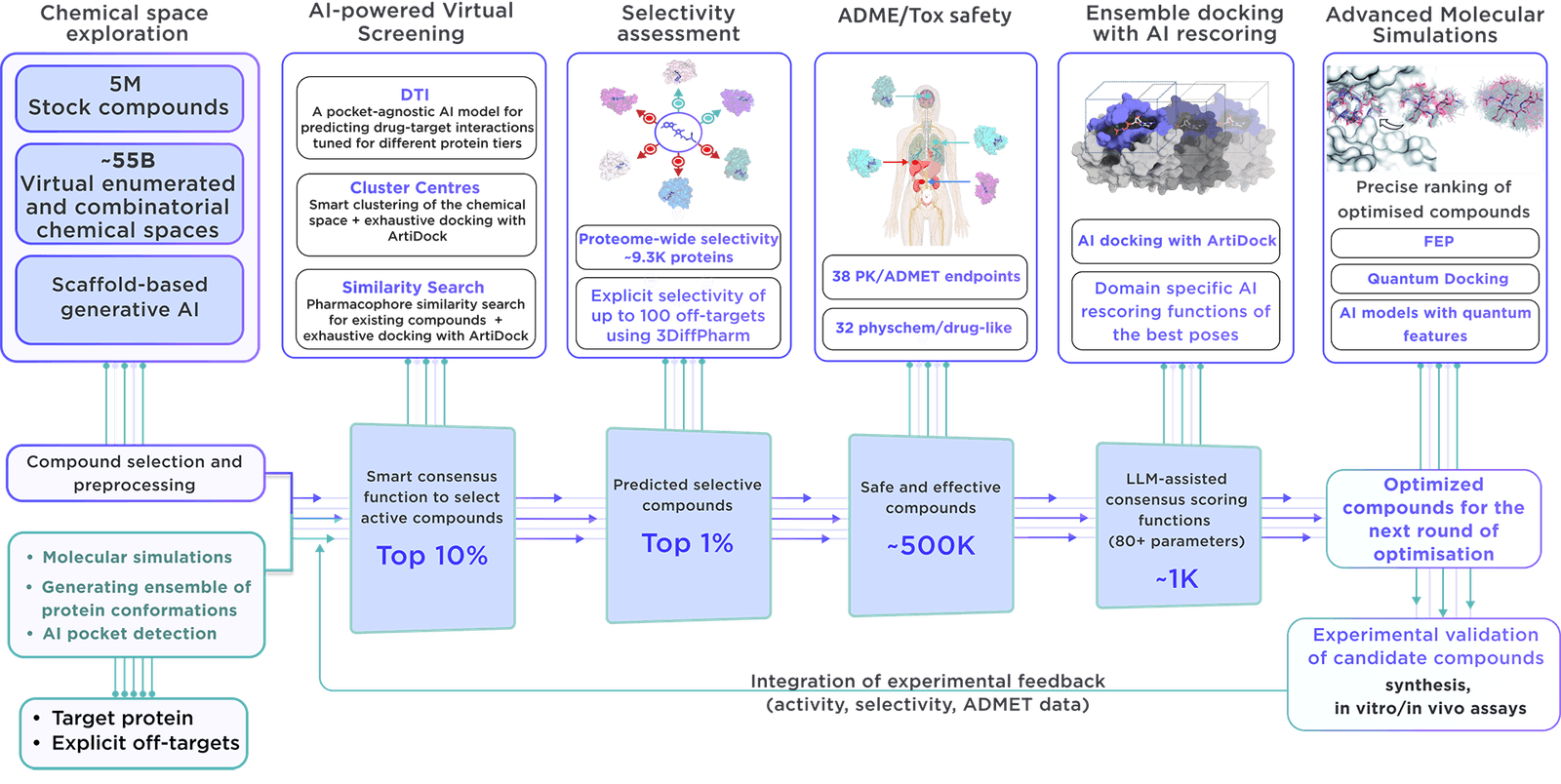Focused On-demand Libraries - Receptor.AI Collaboration
Explore the Potential with AI-Driven Innovation
This extensive focused library is tailor-made using the latest virtual screening and parameter assessment technology, operated by the Receptor.AI drug discovery platform. This technique is more effective than traditional methods, offering compounds with improved activity, selectivity, and safety.
The compounds are cherry-picked from the vast virtual chemical space of over 60B molecules. The synthesis and delivery of compounds is facilitated by Reaxense.
The library includes a list of the most promising modulators annotated with 38 ADME-Tox and 32 physicochemical and drug-likeness parameters. Also, each compound is presented with its optimal docking poses, affinity scores, and activity scores, providing a comprehensive overview.
We employ our advanced, specialised process to create targeted libraries for enzymes.
The method includes detailed molecular simulations of the catalytic and allosteric binding pockets, along with ensemble virtual screening that considers their conformational flexibility. In the design of modulators, structural changes induced by reaction intermediates are taken into account to enhance activity and selectivity.
Our library stands out due to several important features:
- The Receptor.AI platform compiles comprehensive data on the target protein, encompassing previous experiments, literature, known ligands, structural details, and more, leading to a higher chance of selecting the most relevant compounds.
- Advanced molecular simulations on the platform help pinpoint potential binding sites, making the compounds in our focused library ideal for finding allosteric inhibitors and targeting cryptic pockets.
- Receptor.AI boasts over 50 tailor-made AI models, rigorously tested and proven in various drug discovery projects and research initiatives. They are crafted for efficacy, dependability, and precision, all of which are key in creating our focused libraries.
- Beyond creating focused libraries, Receptor.AI offers comprehensive services and complete solutions throughout the preclinical drug discovery phase. Our success-based pricing model minimises risk and maximises the mutual benefits of the project's success.
Receptor.AI
Q96GR4
UPID:
ZDH12_HUMAN
ALTERNATIVE NAMES:
DHHC domain-containing cysteine-rich protein 12; Zinc finger DHHC domain-containing protein 12; Zinc finger protein 400
ALTERNATIVE UPACC:
Q96GR4; A6NH95; B2RE03; Q5T265; Q5T267; Q5T268; Q86VT5; Q96T09

